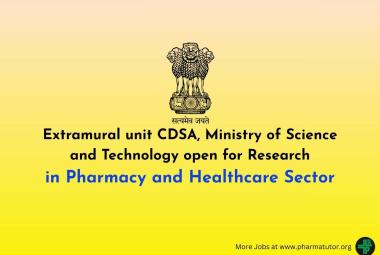About Authors:
Vishnu Dev 1*, Rajiv saxena 2
1 Truba Institute of pharmacy, Bhopal.
2 Assoc. Professor, Truba Institute of pharmacy, Bhopal
*vishnudev2007@rediffmail.com
Abstract
The present study was designed to investigate the anti-dote activity of the methanolic and aqueous extract of musa sapientum. The extract was evaluated by physical and serum biochemical parameters as TC and TG. Anti-dote activity of both extract was determined by acute and chronic codeine poisoning,
Acute opioid intoxication and overdose are common causes of presentation to emergency departments. Although naloxone, a pure opioid antagonist, has been available for many years, there is still confusion over the appropriate dose and route of administration. This article looks at the reasons for this uncertainty and undertakes a literature review from which a treatment algorithm is presented.
The anti-dote activity of musa sapientum leaves against codeine induced acute and chronic poisoning was studied in Wistar albino rats. The various fractions of the leaf extract were administered orally (200 mg/kg) simultaneously with codeine (32m g/kg) for 5-10 days. At the end of the experiment, levels of triglycerides, total cholesterol content were measured. Administration of codeine produced a CNS depressant activity and causes poisioning. There was a significant increase in total cholesterol and triglycerides when compared to normal control. physical observation indicated that simultaneous administration of the fractions delayed the onset of toxicity. All the fractions prevented the poisoning damage caused codeine overdose. The leaves of musa sapientum protected the CNS against codeine damage which may be due to its antagonist activity of codeine.
[adsense:336x280:8701650588]
REFERENCE ID: PHARMATUTOR-ART-1656
1. Introduction-
Opiate poisoning can occur at any time from birth (when pethidine given to the mother in labour may suppress ventilation) to terminal care. The outcome can range from discomfort like constipation to death from respiratory depression.(Paul harris et al,2001).
Codeine or 3-methylmorphine (a natural isomer of methylated morphine, the other being the semi-synthetic 6-methylmorphine) is an opiate used for its analgesic, antitussive and antidiarrheal properties. Codeine is the second - most predominant alkaloid in opium, at up to three percent; it is much more prevalent in the Iranian poppy (Papaver bractreatum), and codeine is extracted from this species in some places although the below-mentioned morphine methylation process is still much more common. It is considered the prototype of the weak to midrange opioids (tramadol, dextropropoxyphene, dihydrocodeine, hydrocodone). (Vale JA. et al, 2004)
Opium derivatives are CNS depressants that probably act on the sensory cortex or higher centers and thalami. Because they can relieve pain, change or elevate mood, relieve tension, fear, and anxiety and produce feelings of peace euphoria, and tranquillity, they are particularly likely to lead to physical and psychologic dependence.(Paul Harris et al, 2001)
Musa sapientum leaf belongs to the Musaceae family is the largest herbaceous flowering plant. The plants are normally tall and fairly sturdy and are often mistaken for trees, but their main or upright stem is actually a pseudostem that grows 6 to 7.6 meters (20 to 24.9 ft) tall, growing from a corm Banana leaf is the leaf of the Banana plant. It is used as a decorative element for special ceremonies in Hindu and Buddhist cultures. It is also used as a plate to serve food in countries like India. Banana leaves, though commonly thrown away, contain large amounts of polyphenols, including EGCG, similar to green tea. Traditionally the stem of banana and leaf was used as treatment in opium poisoning. The leaf are also used in the fish pool to avoid from poisoning. (Grollman AP, et al, 2007).
2. Materials and Methods
Experimental animals: Wistar albino rats of either sex weighing between 125-150 g were used. They were housed in polypropylene cages inside a well-ventilated room. The room temperature was maintained at 23 ± 2° C with a 12 hours light/dark cycle. Food and water were given ad libitum.
2.1 Drugs and chemicals: codeine was obtained from the local market of Bhopal which was zydus alidac company with 15 mg/tab of dose. Naloxone was obtained from the triokaa pharmaceutical ltd. Banglaore.
2.2 Plant material: The plant material consists of dried powdered leaves of musa sapientum belonging to the family musaceae. The leaves of musa sapientum were collected from bhopal district, m.p., India during the month of November 2011. The plant was identified and authenticated by Mr. Zia Ul Hasan, botanist safia college of science, Bhopal, Madhya Pradesh , bearing the reference number 345/Bot/safia/2012.
2.3 Preparation of extract and fractionation: Fresh leaves of the plant were dried in shade under room temperature, powdered mechanically and sieved through No. 20 mesh sieve and extracted with methanol and water. Powder was packed in filter paper wrapped inside soxhlet tube and introduced in the extraction unit of Soxhlet extractor ,extraction was done with ethanol(80 ml) and water(80 ml) for 25 cycles. The extracts were filtered and concentrated with rotary evaporator and residual fractions (RF) of musa sapientum were used for the study.(khandelwal et al, 2008).
2.4 Acute toxicity studies: Swiss albino mice weighing between 20-30 g maintained under standard laboratory conditions was used. Animals were divided into four groups consisting of 5 each; the animals received a single oral dose (2,000 mg/kg, body weight) of each fraction. Animals were kept overnight fasting prior to drug administration. After the administration of the fraction, food was withheld for further 3-4 hours. Animals were observed individually at least once during the first 30 min after dosing, periodically during the first 24 hours (with special attention during the first 4 hours) and daily thereafter for a period of 14 days.(OECD guideline 423)
2.5 Selection of dose of the extract: LD50 was done as per OECD guidelines for fixing the dose for biological evaluation (OECD, 2000). The LD50 of the fractions as per OECD guidelines falls under category 4 values with no signs of acute toxicity at doses of 2,000 mg/kg. The biological evaluation of the fractions was carried out at a dose of 200 mg/kg body weight.
[adsense:468x15:2204050025]
Experimental protocol: Animals were divided into 6 groups consisting of six animals each. Group I received saline water and served as control. Group II received codeine (32 mg/kg orally) alone (negative control). Groups III received the nalaxone (2 mg/kg) with codeine(positive . group IV and V recieved musa sapientum respectively at a dose of 200 mg/kg orally simultaneously with codeine. All the drugs were administered for a period of 5 day for acute and 10 days for chronic group.
2.6 Examination procedure for total cholesterol-
|
Pipette in to tube marked |
blank |
Standard |
test |
|
Serum/plasma |
........... |
......... |
10 µl |
|
Reagent 2 |
.......... |
10 µl |
.......... |
|
Reagent 1 |
1000 µl |
1000 µl |
1000 µl |
Mixed well incubate at 370Cfor 10 minutes
Analyzer was programmed as per assay parameters.
1. Blank the analyzer with reagent blank.
2. Measured absorbance of standard followed by the test.
3. Calculate the result as per given calculation formula.
Absorbance of test
Cholesterol concentration (mg/dl) = ---------------------- × 200
Absorbance of standard
2.6 Examination procedure for triglycerides
Preparation of working reagent:
The content of enzyme reagent was dissolved in 10 ml of diluents buffer. The working reagent was stabilize for 4-6 week at 2-80 C.
|
Pipette in to tube marked |
blank |
Standard |
test |
|
Serum/plasma |
........... |
......... |
10 µl |
|
Reagent 2 |
.......... |
10 µl |
.......... |
|
Reagent 1 |
1000 µl |
1000 µl |
1000 µl |
2.7 Collection of blood samples
On 5th day of treatment of acute group and 10th day of chronic group treatment, the blood was collected by retro orbital eye plexuses puncture, under mild chloroform anaesthesia in tubes. Serum was obtained by centrifugation of blood samples within one hours of collection using ultra centrifuge (Remi) at 2000 rpm for 30 minutes between 4-80C temperature and directly used for estimating serum lipid profile ( TC , TG).
Statistical analysis: Statistical analysis was carried out by one-way analysis of variance (ANOVA) followed by Dunnett’s test. Results are expressed as mean ± SEM from six rats in each group. P values <0.05 were considered significant.
NOW YOU CAN ALSO PUBLISH YOUR ARTICLE ONLINE.
SUBMIT YOUR ARTICLE/PROJECT AT articles@pharmatutor.org
Subscribe to Pharmatutor Alerts by Email
FIND OUT MORE ARTICLES AT OUR DATABASE
3. Results
In acute toxicity studies, it was found that the animal were safe up to a maximum dose of 2,000 mg/kg body weight. There were no changes in normal behavioral pattern and no signs and symptoms of toxicity and mortality were observed.
Physical behavioral study includes muscle relaxant, analgesic activity, locomotive activity which is given in table I, II and III. Study of muscle relaxant activity showed that the falling time of codeine treated animal was less in compare of normal control and standard treated animal (table I). It indicates that the codeine poisoning happened in negative treated animal and in test drug treated animal (aqueous and ethanolic) the falling time increases more than negative. It indicates that the musa sapientum have a curative effect in opioid poisoning.
In the study of analgesics activity the tail flick time of negative control animal was more in comparison to the both cases acute and chronic condition and the flick time of extract was greater than the negative and below to the control (table II). Standard drug treatment shows the effectiveness of the extract. The locomotive activity of negative group for acute and chronic was very less in comparison to the control and standard treated drug (tableIII). The alcoholic and aqueous extract locomotion activity comes above to negative and less than to the standard which suggests that the locomotion activity decreases due to the CNS depression. The extract results express the curative activity of musa sapientum leaf extract. The physical evaluation parameter gave a point that the project was in its positive way and musa leaf has the curative action in case of acute and chronic overdosing of opioid drugs.
It is accepted that the increase in plasma TG and TC is accepted with the opioid poisoning the translocation of TG and TC occurs in blood due to the CNS depression. From physiochemical parameter observation table it is clear indication that the TG and TC level are lower in the musa sapientum treated animals in comparison of codeine treated animal. From table IV the TG and TC level of acute group is high in negative group and the musa sapientum extract treated animal level is low in comparison of negative group and high to the standard treated and control animal. The same data is also for chronic group animals, it shows that the extract of musa sapientum leaf have protective action in the case of acute and chronic opioid poisoning.
Table I: Effect of Musa sapientum leaf extract on Muscle Relaxants Activity by Inclined Plane Model in opium overdose.
|
S. No. |
GROUP |
FALLING TIME IN SECONDS Mean ± SEM |
|
|
ACUTE |
CHRONIC |
||
|
1 |
Normal control |
601.66 ±1.85 |
602.83 ± 2.38
|
|
2 |
Negative control |
118.16 ± 1.57 a*** |
99.5 ± 3.31 a*** |
|
3 |
Standard |
590.5 ± 2.70 a*,b*** |
581.5 ± 2.17 a***, b*** |
|
4 |
Test-1(aqueous) |
323.83 ± 1.93 a***, b***, c*** |
307.0 ± 2.62 a***, b***, c*** |
|
5 |
Test-2(Alcoholic) |
223.16 ±2.94 a***, b***, c***, d*** |
280.33 ± 1.58 a***, b***, c***, d*** |
Table II: Effect of Musa sapientum leaf extract on Analgesic activity by Tail flick Model in opium poisoning.
|
S. No. |
GROUP |
TAIL FLICK TIME IN SECONDS Mean ±SEM |
|
|
ACUTE |
CHRONIC |
||
|
1 |
Normal control |
4.16±0.30
|
4± 0.21
|
|
2 |
Negative control |
7.5±0.22 a*** |
8.66 ±0.21 a*** |
|
3 |
Standard |
4.6± 0.21 b*** |
4.5 ± 0.22 b*** |
|
4 |
Test-1(aqueous) |
5.5± 0.22 a** ,b*** |
5.5 ± 0.22 a*, b***,c* |
|
5 |
Test-2(Alcoholic) |
5.1± 0.21 b*** |
4.83 ± 0.16 b*** |
Table III: Effect of Musa sapientum leaf extract on Locomotive Activity by Photoactometer Model in opium poisoning.
|
S. No. |
GROUP |
NO. OF CROSSING IN 10 MINUTE Mean ±SEM |
|
|
ACUTE |
CHRONIC |
||
|
1 |
Normal control |
106.5 ± 1.17
|
104.16 ±0.60
|
|
2 |
Negative control |
52.66 ± 1.33 a*** |
45.5 ± 0.76 a*** |
|
3 |
Standard |
93.16 ± 0.94 a***,b*** |
92 ± 0.57 a***, b*** |
|
4 |
Test-1(aqueous) |
76.16 ± 0.88 a***, b***,c*** |
66.33 ± 0.66 a***, b***,c*** |
|
5 |
Test-2(Alcoholic) |
72.5 ± 076 a***, b***,c***,d* |
62.5 ± 0.42 a***, b***,c***,d* |
EVALUTION OF SERUM BIOCHEMICAL PARAMETER
Table IV: Effect of musa sapientum Leaf Extract on Serum Biochemical Parameter In Opium Poisoning For Acute Group.
|
S.N. |
GROUP |
TG (mg/dl) Mean ± SEM |
TC (mg/dl) Mean ± SEM |
|
1 |
Normal control |
141.51 ± 1.11
|
110.64 ± 0.64
|
|
2 |
Negative control |
160.86 ± 0.86 a*** |
160.92 ± 0.42 a*** |
|
3 |
Standard |
144.59 ± 0.46 b*** |
120.87 ± 0.40 a***, b*** |
|
4 |
Test-1(aqueous) |
154.15 ± 0.23 a***, b***, c*** |
134.20 ± 0.49 a***, b***, c*** |
|
5 |
Test-2(Alcoholic) |
138.72 ± 1.30 b***,c**,d*** |
141.90 ± 0.23 a***, b***, c***, d*** |
Table V: Effect of Musa Sapientum Leaf Extract on Serum Biochemical Parameter in
Opium Poisoning For Chronic Group
|
S.N. |
GROUP |
TG (mg/dl) Mean ± SEM |
TC (mg/dl) Mean ± SEM |
|
1 |
Normal control |
143.43 ± 0.48
|
112.44 ± 0.41
|
|
2 |
Negative control |
339.35 ± 0.57 a*** |
214.341 ±0.24 a*** |
|
3 |
Standard |
147.36 ± 0.30 a***, b*** |
133.00 ± 0.13 a***, b*** |
|
4 |
Test-1(aqueous) |
172.46 ± 0.33 a***, b***, c*** |
165.75 ± 0.29 a***, b***, c*** |
|
5 |
Test-2(Alcoholic) |
208.14 ± 0.61 a***, b***, c***, d*** |
169.12 ± 0.31 a***, b***, c*** d*** |
4.DISCUSSION
Recently a number of clinical studies suggests that the increase risk of Drug poisoning in Worldwide more than 9 million natural and synthetic chemicals have been identified fewer than 3000 cause more than 95% of accidental and deliberate poisonings all drugs, especially in large doses or when taken over long periods of time, can initiate a toxic condition. Certain drugs used in combination, such as alcohol and barbiturates, result in an intensified alteration of physiological state that is frequently dangerous. Drugs that affect the nervous system often cause adverse reactions in high concentrations Opiate poisoning can occur at any time from birth when pethidine given to the mother in labour may suppress ventilation to terminal care.
In the case of opioid poisoning the CNS is affected first and most. The normal activity of the
CNS is depressed. The muscle is relaxed; analgesic effect happened very deeply, the movement of body slows down. The serum biological parameter is also changed in case of opioid poisoning. The level of triglyceride and total cholesterol is changed and increases from its normal level. (Smith, David, et al, 2001)
In the case of physical evaluation (muscle relaxant activity, analgesic and rotarod model) the data which comes gives a prediction. The falling time of codeine treated animal was decreased in comparisons of normal and standard groups. The falling time of aqueous and alcoholic extract treated animal falls in between of codeine treated and standard drug treated animal. It shows the effect of extract is positive and dose effective dose was 300 mg/ body weight of rats. The reading of chronic group is less In case of codeine treated animal suggests the severity of opioid.
The tail flick time of negative group was more than the control and standard treated animals in the both cases acute and chronic condition and the flick time of extract was greater than the negative and below to the control. Standard drug treatment shows the effectiveness of the extract. The locomotive activity of negative group for acute and chronic was very less in comparison to the control and standard treated drug. The alcoholic and aqueous extract locomotion activity comes above to negative and less than to the standard which suggests that the locomotion activity decreases due to the CNS depression. The extract results express the curative activity of musa sapientum leaf extract. The physical evaluation parameter gave a point that the project was in its positive way and musa leaf has the curative action in case of acute and chronic overdosing of opioid drugs.
It is accepted that the increase in plasma TG and TC is accepted with the opioid poisoning the translocation of TG and TC occurs in bood due to the CNS depression. From physiochemical parameter observation table it is clear indication that the TG and TC level are lower in the musa sapientum treated animals in comparison of codeine treated animal. From table 7.7 the TG and TC level of acute group is high in negative group and the musa sapientum extract treated animal level is low in comparison of negative group and high to the standard treated and control animal. The same data is also for chronic group animals, it shows that the extract of musa sapientum leaf have protective action in the opioid poisoning.(dao.health.wa.gov.au)
Comparing the protective activity of the both extract in itself shows that the protective action of aqueous is more close to the ethanolic extract because the level of TG and TC are more close to the control animal in aqueous extract in comparison to alcoholic extract but both have prominent protective action. The study was designed to investigate the antidote activity of musa sapientum leaf extract in opium poisoning. Aqueous and ethnolic extract of leaves was administered in dose of 200mg/kg / day for 5 day in case of acute and 10 day in the case of chronic condition. Simultaneous administration of musa sapientum leaves extract significantly (p<0.001) prevent the rise serum level of total cholesterol, triglycerides.
The present study was designed to investigate the antidote activity of musa sapientum leaf extract in opium poisoning. In this study firstly I have to choose this plant because it having antioxidant activity after that was divided in to five groups shown in table. Then I gave the vehicle for first group, high dose of codeine for the 2nd nalaxone for third group and aqueous for 4th and alcoholic for 5th group till the end of 5 day for acute and 10 day for the chronic group. After the end of experimental period blood was withdrawn from retro orbit eye plexus of rat under ether anesthesia and centrifuged at 2000 rpm for 30 min so at to get serum. Serum total cholesterol, triglycerides HDL was estimate by using span diagnostic kit.
5. Conclusion
In this study we finally conclude that both aqueous and ethanolic extract of musa sapientum at the dose of 300mg/kg have significant antidote activity. Aqueous extract have slightly more potency than alcoholic. Phytochemical screenings of musa sapeintum have reported the presence of lignin, alkaloids, tannin and glycosides as main chemical constituents. As for the phytochemical result the lignin may be responsible for the antidote activity and further is required for mechanism of action
References
* Agarwal P.K., Singh A., Gaurav K., Goel S., Khanna H.D., Goel R.K. Evaluation of wound healing activity of extracts of plantain banana (Musa sapientum var. paradisiaca) in rats. Indian J. Exp. Biol. 2009;
* Ahmad I., Beg A.Z. 2001. Antimicrobial and phytochemical studies on 45 Indian medicinal plants against multi-drug resistant human pathogens. J. Ethnopharmacol. 2001; 74: 113–123.
* Ercan, N., Nuttall, F.Q., Gannon, M.C., Lane, J.T., Burmesiter, L.A., Westphal, S.A. "Plasma glucose and insulin responses to bananas of varying ripeness in persons with noninsulin dependent diabetes mellitus" J. Am. Coll. Nutr., 1993.
* Grollman AP, Jelakovi? B (November 2007). "Role of environmental toxins in endemic (Balkan) .
* dao.health.wa.gov.au
* Increasing deaths from opioid analgesics in the United Statesy 2006; 15: 618–627
* Kailash, P., Varalakshmi, P. "Effect of banana stem juice on biochemical changes in liver of normal and hyperoxaluric rats" Indian J. Exp. Biol., 30,440-442 (1992).
* Kirtikar KR, Basu RD. Indian medicinal plants. 2nd ed. International Book Distributors, Dehradun, 1981, pp 781-83.
* Kokate C.K, Purohit A.P, pharmacognosy, 2007, 128
* Larpin R, Vincent A, Perret C. Hospital morbidity and mortality of acute opiate intoxication. Presse Med 1990;19:1403–6.
* Lee, S.K., Ng, L.L., Lee, S.I. "Experiments with banana trunk juice as a neuromuscular blocker" Aust. J. Exp. Biol. Med. Sci., 58,591-594 (1980.)
* Murphy NG, Benowitz NL, Goldschlager N. Cardiovascular toxicology. In: Shannon MW, Borron SW, Burns MJ, eds. Haddad and Winchester's Clinical Management of Poisoning and Drug Overdose. 4th ed. Philadelphia, Pa: Saunders Elsevier; 2007:chap 8.
* OECD. Acute oral toxicity-acute oral toxic class method. Guideline 423, adopted 17.12.2001. In: Thirteenth Addendum to the OECD Guidelines for the testing of chemicals. Paris: organization for economic co-operation and development; 2000.
* Paul Harris in Peshawar (November 25, 2001). "Victorious warlords set to open the opium floodgates". London: Observer.guardian.co.uk. Retrieved 2010-03-21.
* Position paper: whole bowel irrigation". J Toxicol Clin Toxicol 42 (6): 843–854. 2004. doi:10.1081/CLT-200035932. PMID 15533024.
* Proft T (editor) (2009). Microbial Toxins: Current Research and Future Trends. Caister Academic Press. ISBN 978-1-904455-44-8.
* Singh, Y.N., Inman, W.D., Johnson, A., Linnell, E. J. "Studies on the muscle-paralyzing components of the juice of the banana plant" Arch. Int. Pharmacodyn. Ther., 324, 105-113 (1993).
* Singh, YJM., Dryden, W.F. "The augmenting action of banana tree juice on skeletal muscle contraction" Toxicon, 28,1229-1236 (1990).
* Smith, David E. and Seymour Richard B., Clinician’s Guide to Substance Abuse, New York:
* Sporer KA. Acute heroin overdose. Ann Intern Med 1999;130:584–9.
* Suzanne Carr (1995). "MS thesis". Retrieved 2007-05-16. (citing Andrew Sherratt).
* Toxicology, American Academy of Clinical (2004). "Position paper: cathartics". J Toxicol Clin Toxicol 42 (3): 243–253. doi:10.1081/CLT-120039801. PMID 15362590.
* Tripathi K. D, essential of medicinal pharmacology, 2008, 455.
* Usha, V., Vijayammal, P.L., Kurup, P.A. "Aortic glycosaminoglycans in antiatherogenic action of dietary fiber from unripe banana (Musa paradisiaca)" Indian J. Med. Res., 94, 143- 146(1991).
* Vale JA, Kulig K; American Academy of Clinical Toxicology; European Association of Poisons Centres and Clinical Toxicologist. (2004). "Position paper: gastric lavage". J Toxicol Clin Toxicol 42 (7): 933–943.doi:10.1081/CLT-200045006. PMID 15641639.
NOW YOU CAN ALSO PUBLISH YOUR ARTICLE ONLINE.
SUBMIT YOUR ARTICLE/PROJECT AT articles@pharmatutor.org
Subscribe to Pharmatutor Alerts by Email
FIND OUT MORE ARTICLES AT OUR DATABASE









